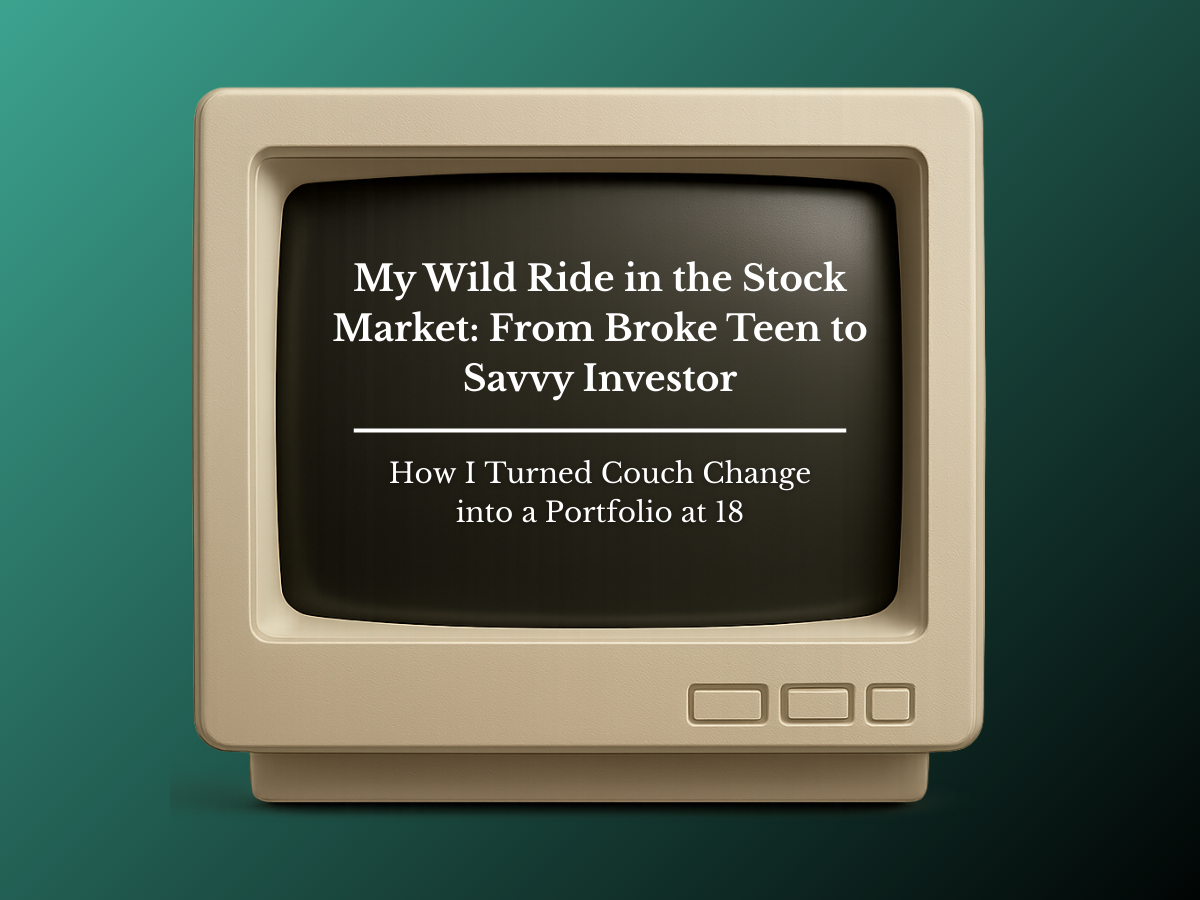
Welcome to The Profit Zone 👋
Where 12,700+ millionaires, CEO’s and high-performing entrepreneurs read the #1 financial newsletter on the web.
Happy Monday!
Let’s start the week off strong.
The agenda for today:
👉 CrowdStrike initiates one of the largest computer outages in history
👉 Behavioral Investing: 7 Dangers To Avoid
👉 Value Investor Daily: Your Source For Undervalued Assets

“Much success can be attributed to inactivity. Most investors cannot resist the temptation to constantly buy and sell.”
Headlines Making Noise: Keeping You Informed and Empowered 📝💡

CrowdStrike, one of the largest cybersecurity companies in the world, used by Fortune 500 companies and businesses around the globe for managing the security of devices operating on Windows, was the catalyst for one of the largest computer crashes in history.
The IT outage was estimated to have affected 8.5 million Windows devices.
The outage grounded airlines, knocked news channels off the air, brought banks offline and interfered with 911 operators.
Many workers woke up on Friday and found they couldn’t even boot up their computers.
The reason: a single software update originating from CrowdStrike.
CrowdStrike CEO George Kurtz tweeted that this was not a security incident or cyberattack and that the issue had been identified and a fix was deployed.

I guess in this situation, just turning your machine off and back on didn’t fix the problem?
The stock is down 17.95% over the last 5 days.
Behavioral Investing: 7 Dangers You Should Avoid And How To Combat Them
A common issue we see with investing is the the tendency for investors to make important decisions too quickly, based on nothing more than a “feeling”.
PUMP THE BRAKES MY FRIEND.
When it comes to investing, your emotions should be left at the door.
Have you ever caught yourself rushing to sell a stock because it keeps falling?
I have many times. And it’s not a good position to be in.
When you let your emotions drive your financial decisions, that’s when mistakes happen.
Today’s newsletter will walk you through everything you need to know to avoid getting caught up in an emotional rollercoaster that will only end up with you losing your hard-earned money.
There are two types of beliefs.
Traditional and Behavioral.
Traditional beliefs suggest that:
The markets and investors are rational
Investors have self-control
Investors are aware of biases
Investors are infallible
Behavioral beliefs suggest that:
Investors are just normal human beings
Markets react to people’s actions
Investor self-control is limited
Investors are subject to biases
Investors make human error

Up next, we’re going to be covering the 10 dangers of behavioral finance you should avoid.
Learn how to become an “Intelligent Investor.”
Warren Buffett says great investors read 8 hours per day. What if you only have 5 minutes a day? Then, read Value Investor Daily.
Every week, it covers:
Value stock ideas - today’s biggest value opportunities 📈
Principles of investing - timeless lessons from top value investors 💰
Investing resources - investor tools and hidden gems 🔎
You’ll save time and energy and become a smarter investor in just minutes daily–free! 👇
Heuristic Assumptions
In other words, shortcuts.
These are often called rules of thumb and we tend to follow them blindly as investors.
The problem with rules of thumb is that they don’t apply to every situation.
The following are almost always followed without question in the world of investing.
All Sales Are Good Sales
How many times has a stock fallen in price enticing you to buy it, only to realize that what you paid was actually fair value?
Humans tend to trust that a sale price ALWAYS means a GOOD price.
It’s because the reference price (the price before the sale) is higher, and therefore when we see a lower price, we immediately assume we’re getting a good deal.
Past Performance = Future Performance
A heuristic that always proves to be true in the investing world is that investors tend to assume that the past performance of a stock indicates how well that stock will perform in the future.
With that being said, there is value in knowing the history of an asset. However, our belief in the correlation between past and future performance neglects important outside factors like economic fluctuations, management shifts, monetary policy etc.
We can “think” a stock will continue performing as it has in the past, but the only way to know is to understand the business and the fundamentals of the company.
The Biases
Many biases are unconscious and we engage in them without even knowing.
You only gain the ability to fight back against them when you understand what they are.
Here are 4 you should be aware of:
Recency Biases
This leads us to believe that something that happened recently is more likely to happen again.
A great example of this is the Great Recession, which rocked the minds of investors for a long time.
A lot of people who lived through it thought it would happen again, so instead of getting back into the stock market, they waited on the sidelines for longer than necessary.
The stock market made a full recovery (and then some) and many investors missed out on tons of wealth creation.
Confirmation Bias
This leads us to seek and trust information that supports beliefs we’ve already been told.
As anything, people have the right to form their own opinions. We see it all the time in the stock market.
There are investors that are so emotionally attached to a specific company that even if you show them the numbers for why that company is dying, they will continue to protect their belief that it’s of high value.
Familiarity Bias
This leads us to stick to things we know and understand because it feels safer than things we don’t know and don’t understand.
You can dig yourself into a deep hole with this bias, because it can lead to you buying similar stocks from similar industries and similar locations without even noticing it.
For example, if you’re familiar with the Real Estate industry and have worked in the industry yourself, you might be more inclined to buy REITs.
However, this could hurt you because diversification is an important aspect of a healthy and well-performing portfolio.
Anchoring Bias
This leads us to run with the first piece of information we learn, even if it’s wrong.
For example, it might be the first time you ever heard about Stock ABC. Some Wall Street analyst who covers the stock then mentions that it’s undervalued.
Since it’s the first piece of information you hear about the stock, it may lead you to anchor that belief, and only think of the stock as undervalued from there on out, regardless of its price.
One Final Behaviour To Be Aware Of…
Loss Aversion
Have you ever gotten more mad at a $5,000 loss than you were happy at a $5,000 gain?
This is called loss aversion.
Why does this happen?
Because the majority of investors are risk-averse, rather than risk-tolerant.
This means more often than not, we’re more inclined to avoid risk than take it on.
So even though the amounts are the same, we tend to feel more emotions when our portfolio falls by $5,000 than if it were to rise by the same $5,000.
How To Combat These Behaviors
Knowing that behavioral biases exist is only half the battle.
The other half is knowing how to combat against them.
There are a few tools I use that help me eliminate my subconscious and leave my emotions at the door.
Taking Your Time
The first piece of information you hear isn’t always true and the crowd isn’t always right.
It’s important to take a step back and get a bird’s-eye view of what it is you’re trying to accomplish within your financial goals.
If you find yourself being rushed into an investment decision, take some time to think logically about it and gather as much information as you can to make an informed decision.
Stick To Rules and Systems
Your investment strategy is your bible. And you should refer back to it whenever you feel like you’re going off track.
This means:
Having a desired asset allocation
Knowing your risk tolerance
Understanding your financial goals
Knowing your rules for buying/selling a stock
When you have a strict blueprint in place, emotions are more likely to be pushed to the side.
Know The Facts
Everyone and their mother will try to sell you on the “next hottest stock”.
I prefer to know the facts before making a decision.
After all, we’re talking about your hard-earned money here.
Investing blindly into assets without knowing the full story is a recipe for disaster.
Which is why I use Snowball Analytics to make sure I have all of the data right in front of me.
Gone are the days when I’m relying on the word of people who likely don’t even know what they’re talking about.
Snowball Analytics makes it easy.
With stock screeners and integrated AI to tell you how fundamentally safe a company is, you simply cannot mess up.
It’s the ultimate fact-checker. And it takes logical investing to a whole new level.
I’ve been using Snowball Analytics for over a year now and investing has never been easier.
I can compare stocks, I can check the fundamentals, and I can sort by specific criteria.
There’s nothing this platform can’t do.
Don’t believe me? See for yourself.
You can either sign up for the free plan.
OR…
Sign up here for a premium plan to get access to all of the best features and take 10% OFF when you use promo code: “dividenddomination”

See you in the next one!
Miss last weeks PREMIUM newsletter? Read it below:
In the past month, our Stock Picks inside Premium have beaten the S&P 500 by 1.47%.
Every month, we send out new Stock Picks with current valuations and explain the reasoning behind them.
Along with market news updates to keep your informed on all of the stocks.
Our Premium subscribers are loving this new feature as we continue to find all of the hottest deals in the market.
If you want to follow along and start beating the S&P 500, click here to upgrade for less than what you’ll spend on lunch today.

Did you enjoy this newsletter?

My Website - a one-stop shop for all things dividend investing.
Financial Domination - learn how to set up an effective budget, figure out your investor profile, use stock screeners and rebalance your portfolio without paying someone to do it for you.
The Complete Investors Accelerator Pack - everything you need to build a dividend portfolio that grows on itself. Learn more about dividend investing, how to analyze dividend stocks, what to do with your dividends and how to build a stream of passive income through the stock market.
Beehiiv - sign up for Beehiiv and start your own newsletter today.
TweetHunter - let the software do the tweeting for you. The only scheduler you’ll ever need. This tool makes me money in my sleep. Give it a try for free.







